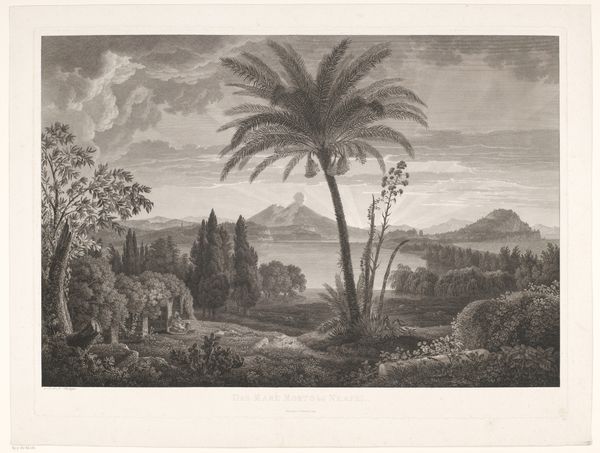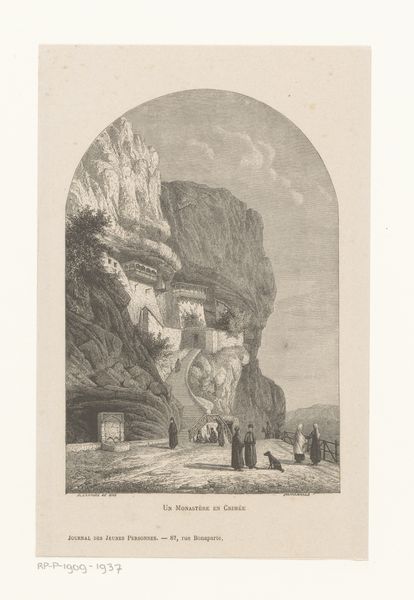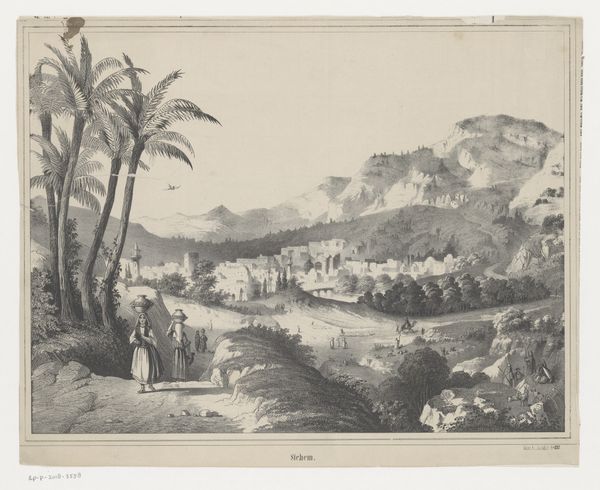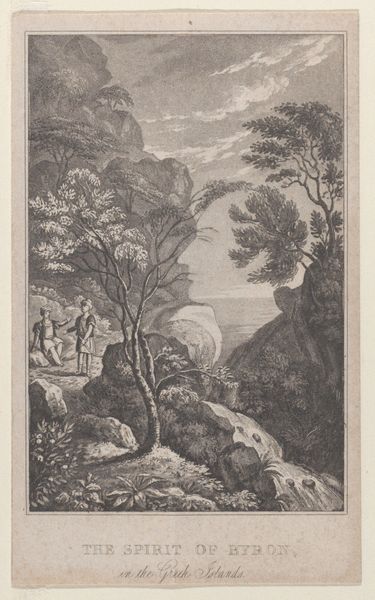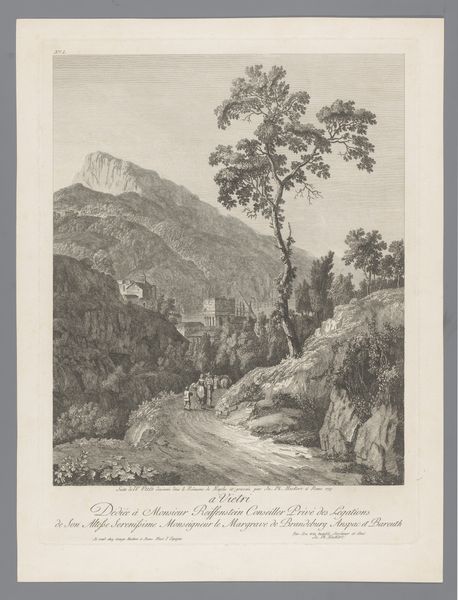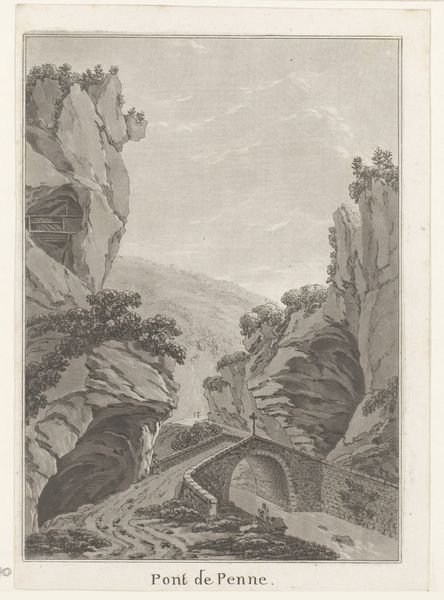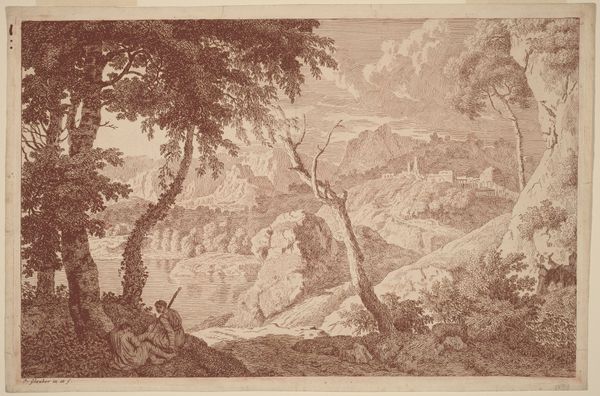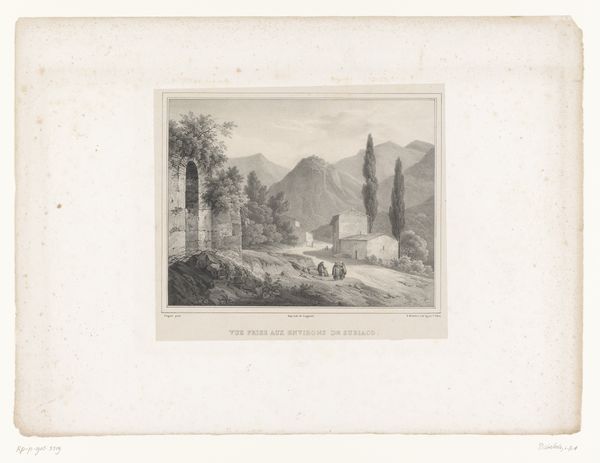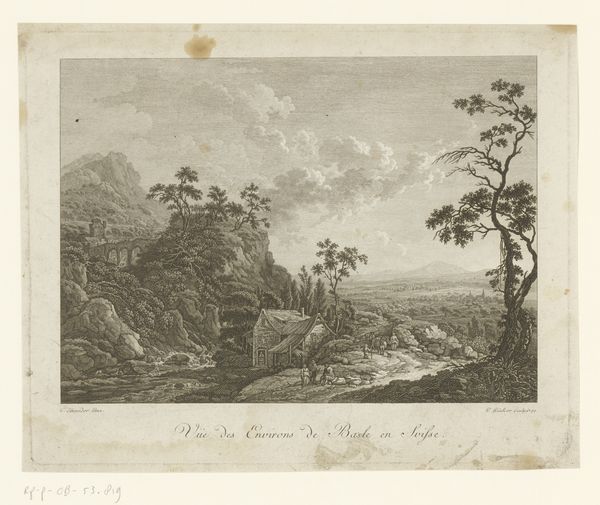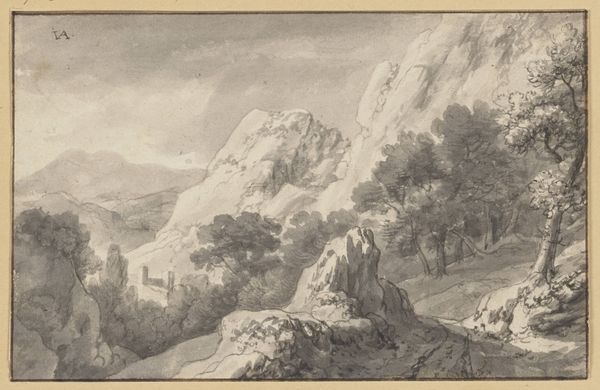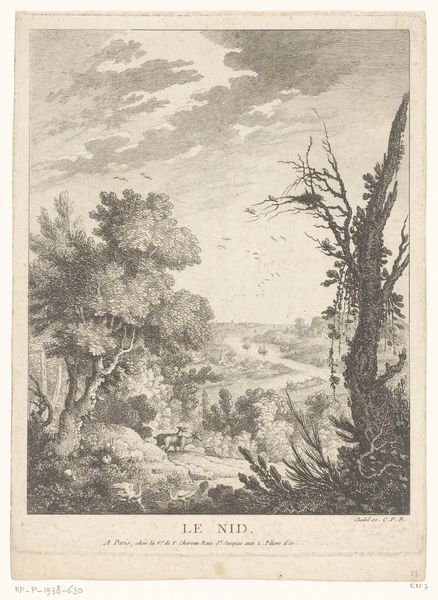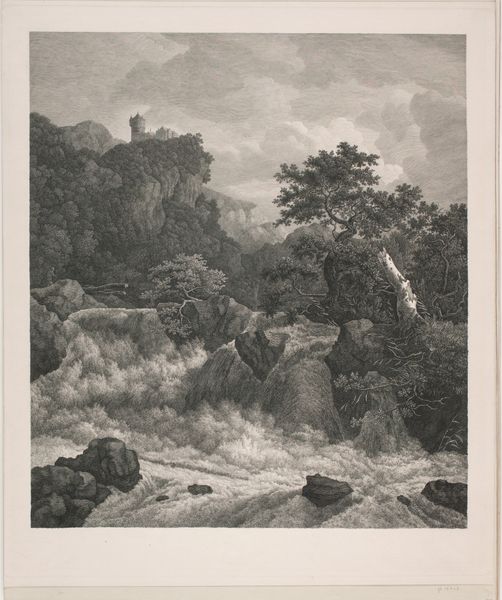
Dimensions: height 253 mm, width 180 mm
Copyright: Rijks Museum: Open Domain
Curator: "Berglandschap met rustende figuren op een rots," or "Mountainous landscape with resting figures on a rock," a print by Guillaume Van der Hecht, likely created between 1827 and 1879. Editor: It has a wistful and contemplative mood, definitely calling to mind a Romantic spirit. I am also struck by how effectively the arched composition focuses the eye upwards toward the clouds, as if mimicking the landscape's elevation itself. Curator: The artist created this piece during a period of colonialism, which drastically shifted the cultural landscape of the places portrayed. Given this context, I'm interested in the figures. Their placement, relaxing in the landscape, can potentially represent a dynamic between the colonizer and colonized, leisure set against the backdrop of exploited land and labor. Editor: I can certainly appreciate that angle, but look at the sheer virtuosity of the mark-making here! The tonal range achieved through etching creates a sense of depth and texture; observe how he employs different densities of hatching to represent the varying textures of rock, foliage, and cloud. Curator: And doesn’t this pursuit of capturing “texture” in service of realism obscure Van der Hecht’s potential engagement in reproducing an exoticized image of these locations? The idea of nature as merely something to be depicted through this technique undermines the cultural importance the land has to those who inhabit it. Editor: Perhaps. But this kind of close observation allows him to capture the way that light interacts with form—to evoke, quite viscerally, the atmosphere of a tropical scene that Northern Europeans at the time may have only read about. The sharp light, the deep shade—it creates an intense feeling of being somewhere very specific. Curator: The light is nice, I'll give you that. Though I find myself lingering on that romantic element again, wondering how the figures fit within this scene, or if they even have names or a background. There’s a story suggested, even though untold, it raises the questions that interest me. Editor: Well, even if our reading differs, hopefully we both invite our listeners to view it in their own way. Curator: Yes, a print is so much more than its visual elements. Understanding context opens even more to learn from works like this.
Comments
No comments
Be the first to comment and join the conversation on the ultimate creative platform.
